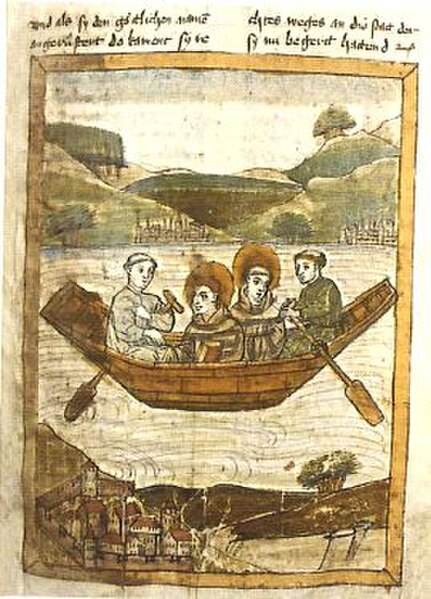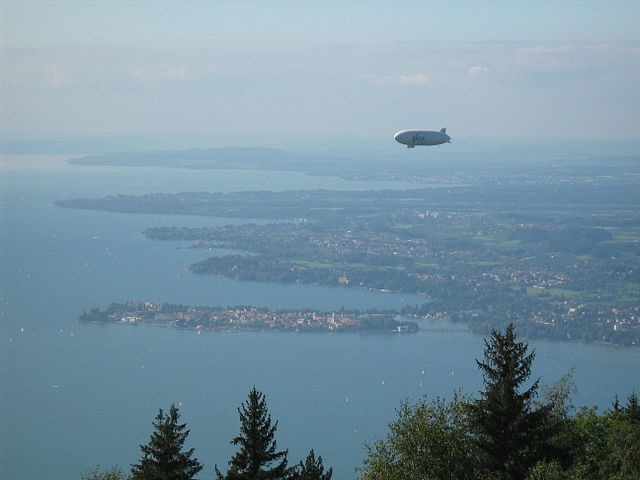Lake Constance refers to three bodies of water on the Rhine at the northern foot of the Alps: Upper Lake Constance (Obersee), Lower Lake Constance (Untersee), and a connecting stretch of the Rhine, called the Lake Rhine (Seerhein). These waterbodies lie within the Lake Constance Basin in the Alpine Foreland through which the Rhine flows.
Satellite image
Saints Columbanus and Gallus on Lake Constance, from a 15th-century manuscript
Complete lake from the Winterstaude
Lake Constance with the Island of Lindau seen from the Pfänder in 2007
The Rhine is one of the major European rivers. The river begins in the Swiss canton of Graubünden in the southeastern Swiss Alps. It forms part of the Swiss-Liechtenstein, Swiss-Austrian, and Swiss-German borders. After that the Rhine defines much of the Franco-German border, after which it flows in a mostly northerly direction through the German Rhineland. Finally in Germany, the Rhine turns into a predominantly westerly direction and flows into the Netherlands where it eventually empties into the North Sea. It drains an area of 9,973 km2 and its name derives from the Celtic Rēnos. There are also two German states named after the river, North Rhine-Westphalia and Rhineland-Palatinate.
The Rhine in Basel, Switzerland
Lake Toma seen from the Rhine's upstream end
The confluence of the Anterior Rhine to the lower left and the Posterior Rhine in the background forms the Alpine Rhine (to the left) next to Reichenau.
The Rhine between Sargans in Switzerland (left) and Balzers in Liechtenstein (right) with the Gonzen (1,829 m (6,001 ft), left), the Girrenspitz (2,099 m (6,886 ft)) in the back, and the Maziferchopf (855 m (2,805 ft)) to the right








